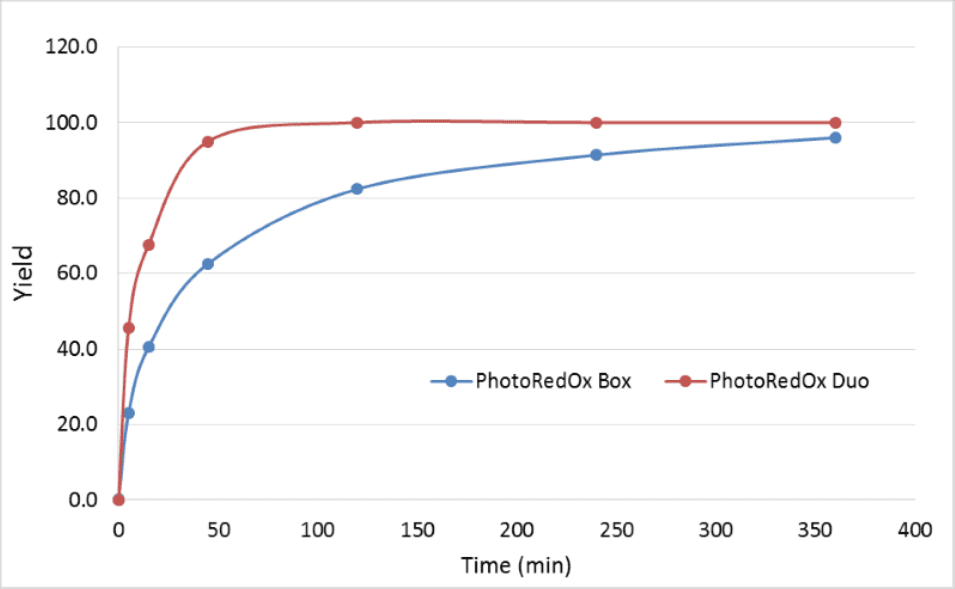Meet our photoreactor with double-capacity: The EvoluChem PhotoRedOx Duo™. It’s the choice for the chemist who seeks higher reaction capacity and increased light intensity than found in the PhotoRedOx Box™.
This photoreactor with double-capacity leverages the same patented concept (US Patent #10,906,022) as the original PhotoRedOx Box™. PhotoRedOx Duo™ increases the reaction vials capacity to 16 vials (2, 4 or 8 ml) using 2 of the same vial holders as the PhotoRedOx Box™. Using the 2 blue LED setup allows to increase reaction rate of difficult reaction conditions.
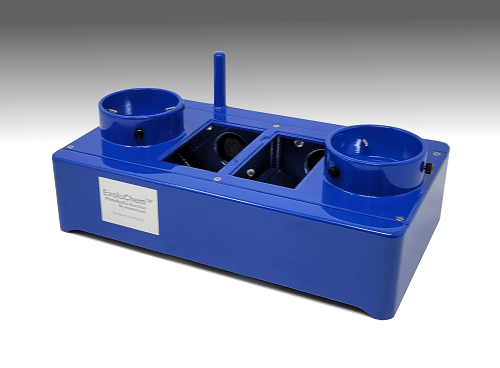
Features
-
- Several light source available
- Photochemistry chamber to evenly distribute light
- Flexible format vials
- Magnetic stirring on standard stirring plate
- Cooling by fan to maintain experiment at room temperature
- Pre-designed array of catalysts and reagents available
- For added efficiencies, check out thePhotoRedOx Flow Reactor Accessory
Benefits
-
- Easy setup on a standard stirring plate
- Perform up to 64 reaction conditions simultaneously
- Individually sealed vials enable flexible study design
- Save your substrate using low scale reaction conditions
- Save time on optimization
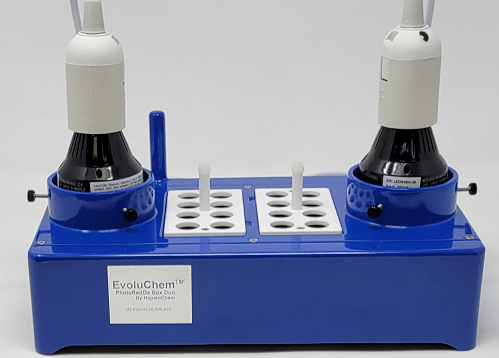
PhotoRedOx Duo™
HCK1006-01-023
(US Patent #10,906,022)
Easy setup and compact design
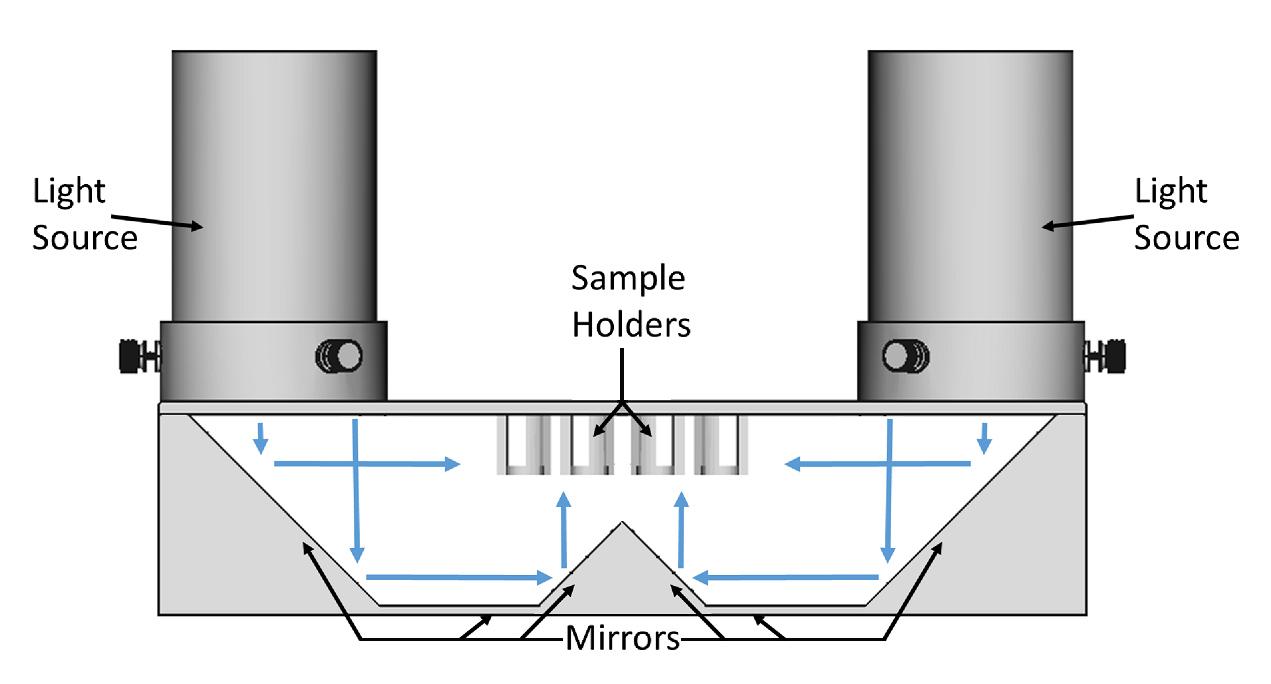
Unique design to optimize light distribution
Fit multiple vial sizes
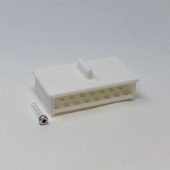
32 X 0.3 ml vials
HCK1006-01-017
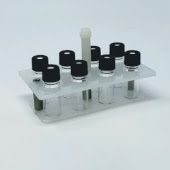
8 X 2 ml vials
HCK1006-01-018
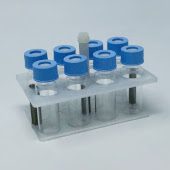
8 X 4 ml vials
HCK1006-01-019
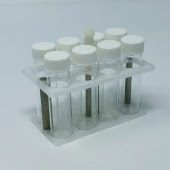
8 X 8 ml vials
HCK1006-01-020
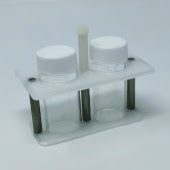
2 X 20 ml vials
HCK1006-01-021
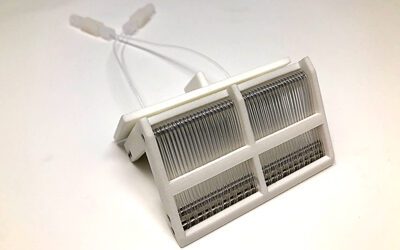
2 ml PFA flow-cell
HCK1006-01-022
Test Reaction

Reaction protocol
In duplicate in a 4-ml vial equipped with a teflon septa and 2×7 mm stir bar, were weighed 4-bromoacetophenone (4.95 mg, 25 μmol) and potassium benzyltrifluoroborate (4.50 mg, 25 μmol, 1 equiv.). To this vial was added a 1.0 ml solution in DMA containing NiCl2-dme (1.1 mg, 5 μmol, 0.1 mol %), dtbbpy (1.3 mg, 5 μmol, 0.1 mol %) and Ir(dF-CF3-ppy)2(dtbpy) (1.12 mg, 1 μmol, 0.02 mol %) followed by addition of 2,6-lutidine (17.5 μl, 150 μmol, 6 equiv.) . The solution was sparged with nitrogen via submerged needle for 5 minutes and vial was placed in EvoluChem™ photoreactor with blue Kessil 34W LED or reactor with two blue kessil 34W. Reaction time course was monitored at 0, 5, 15, 45, 120, 240, and 360 minutes.
Time to 95% conversion: Mono 360 min, Duo 45 min
